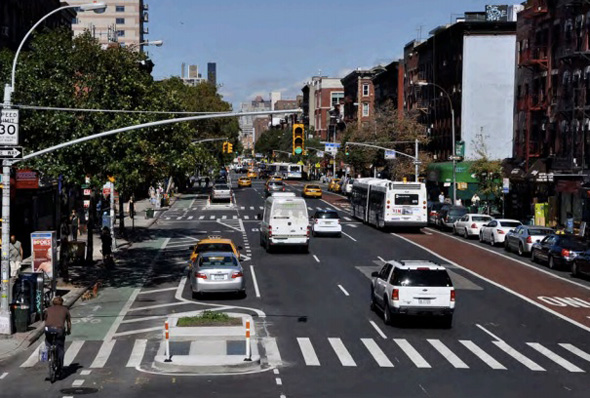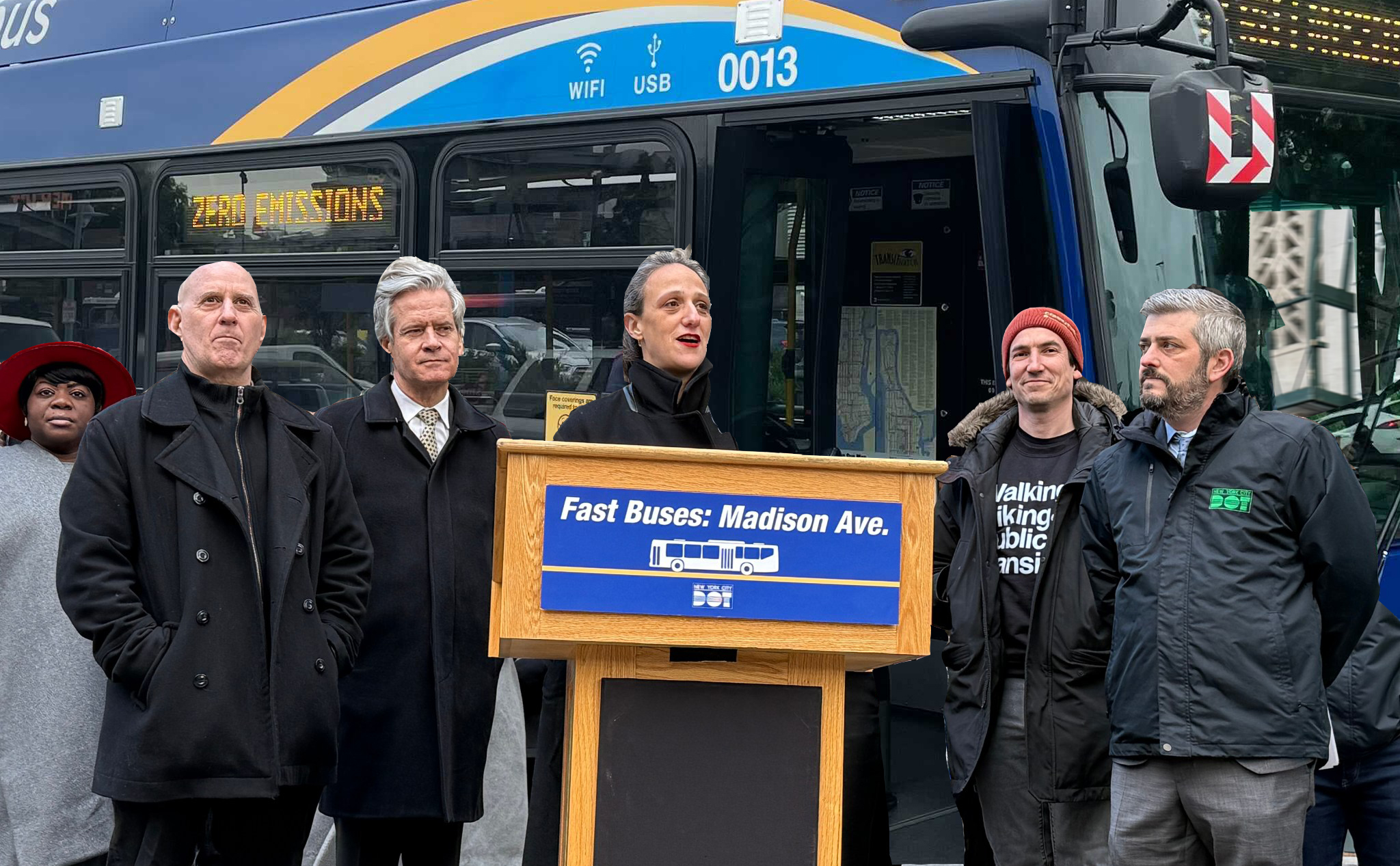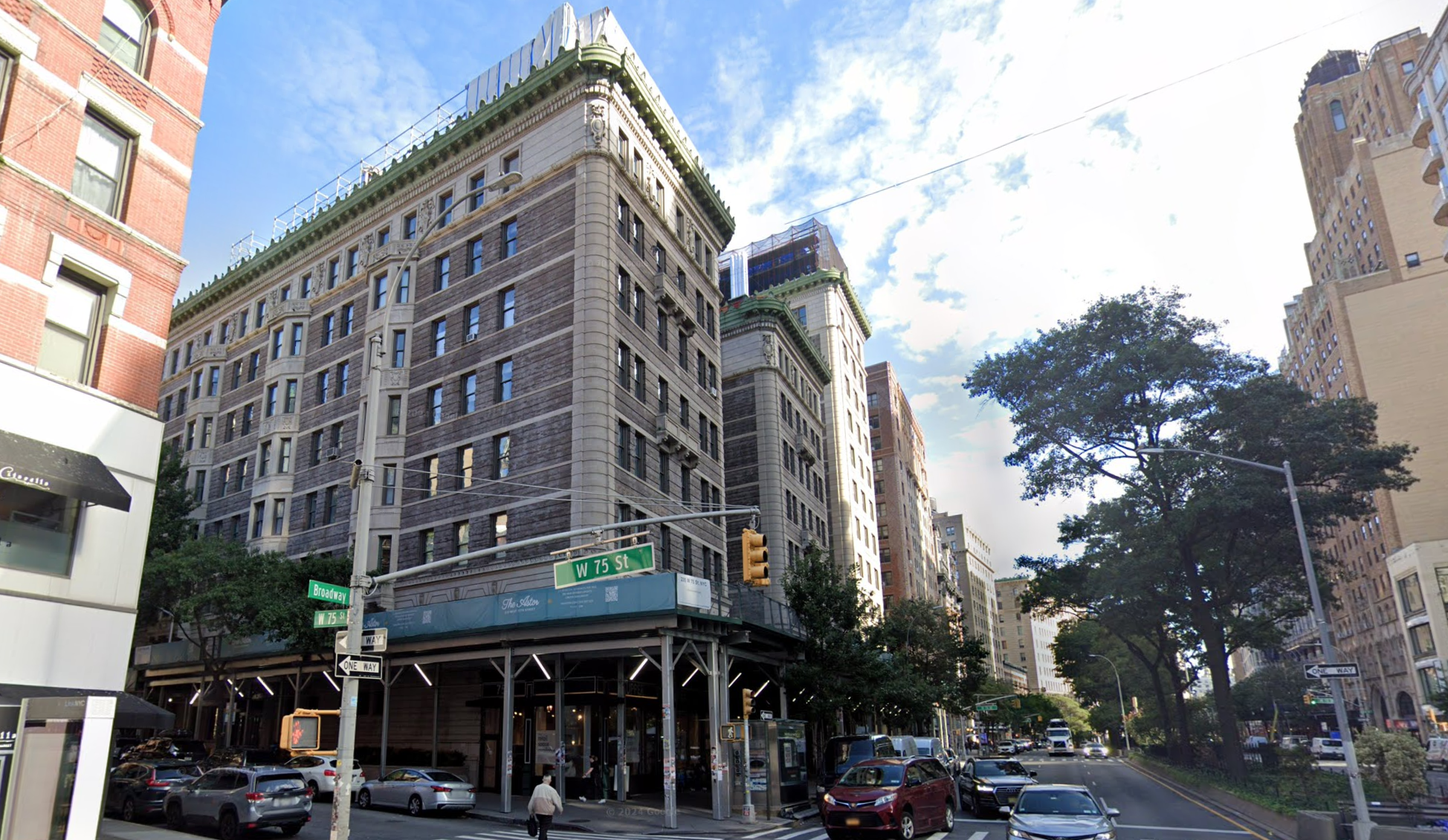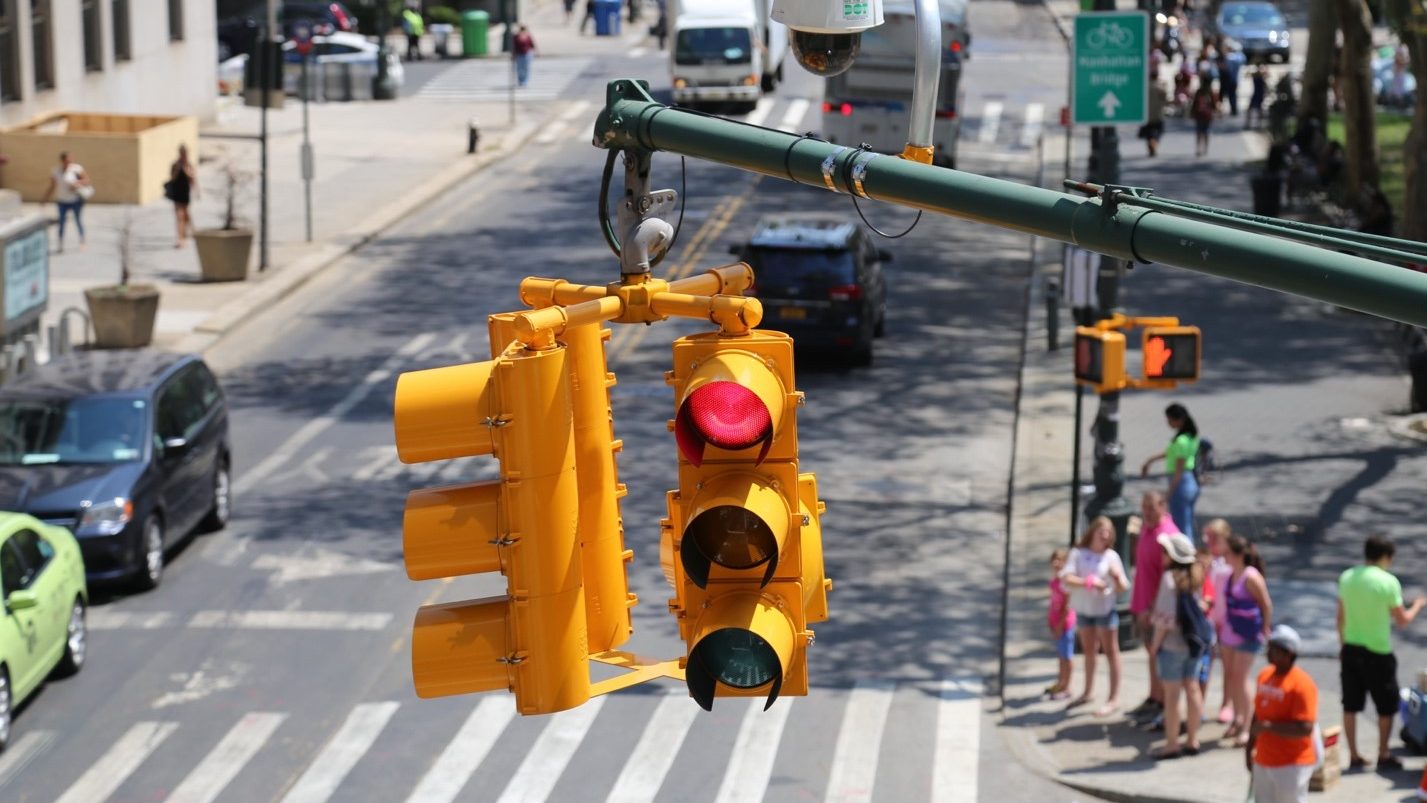Times have changed since Manhattan Borough President Scott Stringer hosted a conference on transportation reform in 2006. Five years ago, New York City appeared to be on the verge of shaking off the traffic-first approach to street engineering that had dominated city transportation policy for decades. Whispers were in the air about a push to tame city traffic and fund the transit system by putting a price on congestion-plagued streets. Since then, plenty of innovation has come to NYC streets, while traffic congestion and transit funding remain core challenges.
Last Friday, Stringer's office organized a sequel, providing an opportunity to take stock of the last five years and recalibrate the transportation reform agenda going forward.
As it happened, former DOT Commissioner Iris Weinshall made brief remarks at the outset of the event, hosted at John Jay College, in her capacity as a vice chancellor of CUNY. The moment was ripe with irony. Five years ago, then-commissioner Weinshall made a splash at the first Stringer transportation conference, calling for bus rapid transit, parking reform, safe routes to schools, and new public spaces. In the past two years, Weinshall's dogged attempts to eradicate the Prospect Park West protected bike lane have, if nothing else, underscored why she had to leave the department before progress could be achieved on all the promises she made in 2006.
On Friday morning, the stage belonged to her successor, Janette Sadik-Khan, who highlighted DOT’s long list of achievements and innovations:
- Select Bus Service: Though the roll-out has been slower than originally anticipated and true bus rapid transit has eluded NYC DOT and the MTA, NYC now has three operating corridors of Select Bus Service, including 34th Street and First and Second Avenues in Manhattan and on Fordham Road in the Bronx, improving transit for tens of thousands of riders each day and attracting thousands more.
- Bicycling: In 2006, the city promised to add 200 new miles of bike lanes, a pledge that has since been fulfilled and surpassed. Now New York sets its sights not only on advancing the number of bike lane miles, but creating innovative street designs that lead the nation in making cycling accessible to a wide array of city residents.
- Parking: The DOT has piloted Park Smart, time-of-day variable pricing for parking spots in Park Slope and Greenwich Village and is on its way to expanding it into other parts of the city.
- Safe routes to schools: The city has a robust program to improve safety near 135 schools in all five boroughs.
- Public plazas: The big public space news of 2006 was that the city would add a ribbon of pedestrian space to the Times Square bowtie. No one could have predicted the city would add substantial public plazas at Times Square and Herald Square by reclaiming lanes from traffic.
For all the reasons to celebrate the progress on NYC streets, the conference also provided some sobering perspective on the state of the transit system.
Stringer focused on the high price of MTA capital construction – what former MTA Charman Jay Walder dubbed “the MTA premium” on construction costs compared to other world cities. New York suffers from a much higher cost per mile for expanding its subway network – nearly quadruple the cost of subway expansion in London and more than five times as expensive as in Paris, Berlin and Tokyo.
The borough president pointed to costly work rules and excessive regulation as causes. He also mentioned that not knowing the location of underground utility lines has slowed the Second Avenue Subway and driven up costs.
Stringer proposed an “underground census” that would help capital construction stay on time and under budget by using all our available technology to map the city’s entire subsurface infrastructure network. He claimed such a tool would have saved $80 million on the Second Avenue Subway project. Unfortunately, given the project's multi-billion dollar pricetag, even $80 million amounts to a drop in the bucket.
Former Port Authority chief Chris Ward – always known as a frank pragmatist – could truly speak his mind, having left his post earlier this fall. He focused on the continued irrationality of New York's road pricing and the failure to properly fund infrastructure, saying that the region is not going to get anywhere without tolling the East River bridges and developing a more general tolling structure that reflects when and how people use crossings. Crossing the Tappen Zee Bridge during the times of day when traffic moves freely should cost less than driving across the Brooklyn Bridge into the most congested part of the region. According to Ward, we need to assess user fees to reinvest in our infrastructure.
Gene Russianoff of the Straphangers Campaign agreed. “Someday we’ll have to move to a system of congestion pricing or bridge tolls. It’s politically very hard but it makes extremely rational sense as a source of funding,” he said, while adding that right now is a very difficult time to be talking about taxes or new revenues.
Albany's failure to enact congestion pricing or bridge tolls has put transit advocates in a very hard place. Without those revenue streams, the MTA will have to borrow vast sums to pay for its current capital program -- a lose-lose proposition. While on the one hand increased borrowing means that the pressure on the fare is only going to go up in the future, on the other hand rejecting borrowing means cutbacks in the capital program that would send the system back to the days of frequent train breakdowns and crumbling stations, said Russianoff.
After several rounds of fare hikes and service cuts in the past five years, there is a consensus that transit funding is the primary transportation issue New York City needs to face. What will it take to celebrate progress on that challenge when the next borough president’s transportation conference rolls around in 2016?






